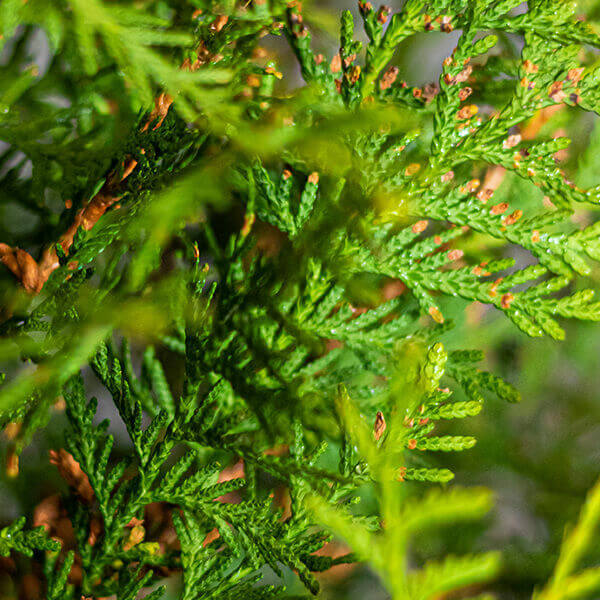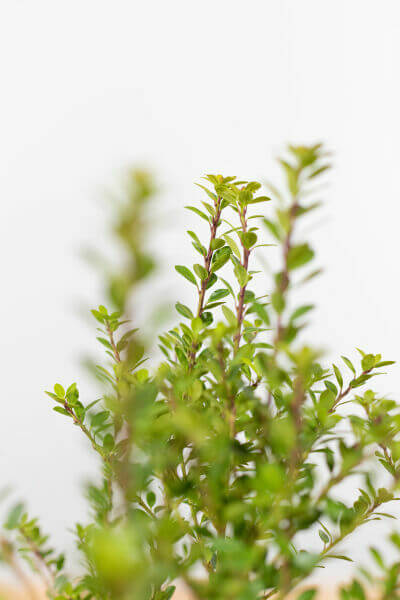Best Hedging Plants For Garden Art
Best Hedging Plants For Garden Art
Blog Article
Best Hedging Plants For Ground Cover
Enhance your garden's allure with lavish hedge varieties such as Yew (Taxus), Thuja, Laurel, Photinia, and Bamboo, commemorated for their structural integrity and ecological advantages.
Yew and Thuja offer evergreen protection and winter durability, while Laurel offers quick growth and broad, aromatic leaves.
Photinia adds seasonal appeal with its lively red foliage, and Bamboo lends a low-maintenance, peaceful atmosphere.
These hedges enhance air quality, decrease noise, and develop tranquil, personal areas.
Correct planting, spacing, and maintenance guarantee energetic development and environmental harmony.
Explore how these lavish varieties can elevate your garden's charm and wellness.
Secret Takeaways
Change Your Garden With Lush Hedge Varieties
- Select Yew for its dense, evergreen development and unrivaled durability.
- Go with Laurel for its quick development and broad leaves, making sure quick personal privacy.
- Choose Photinia for its dynamic seasonal foliage, which turns a striking dark red.
- Make use of Bamboo for a low-maintenance, winter-hardy hedge with aesthetic appeal.
- Space plants 2-3 per meter and prune routinely for optimal growth and health.
Popular Hedge Plants
When changing a garden with lavish hedge ranges, it's vital to consider popular hedge plants such as Yew, Thuja, Laurel, and Photinia due to their unique qualities and advantages.
Yew (Taxus) is extremely respected for its longevity and thick, green development, making it a prime option for withstanding landscapes.
Thuja is kept in mind for its evergreen foliage and robust winter season strength.
Photinia includes seasonal vibrancy with red leaves that darken with time, developing vibrant visual appeal.
Laurel offers rapid growth and fragrant, broad leaves, suitable for quick privacy.
Additionally, Bamboo is an outstanding choice for ambiance, providing a low-maintenance, winter-hardy choice that improves the garden's visual with its elegant, swaying walking sticks.
These choices accommodate a range of horticultural requirements and choices.
Advantages of Garden Hedges
Garden hedges offer a wide variety of advantages, making them an important addition to any landscape. These natural barriers are economical to execute and provide significant wind defense, improving air blood circulation and contributing to sound decrease. The dense foliage of hedges like Thuja and Beech ensures personal privacy by blocking exposure, creating a peaceful and remote environment.
Hedges likewise play an essential function in microclimate guideline, supplying a steady environment that cultivates plant development and minimizes temperature level changes. Their intricate leaf structures filter pollutants, enhancing air quality and adding to a healthier garden environment.
Furthermore, hedges master sound decrease, taking in and deflecting sound waves to lower ambient sound levels. This double functionality of offering both acoustic and visual personal privacy improves the total serenity and visual appeal of any garden.
Planting and Maintenance Tips
For an effective hedge, meticulous preparation of the planting area is important. Guarantee the soil has correct pH and drainage to support strong root development.
Space the plants appropriately for the chosen types. Water the hedge frequently throughout its preliminary growth phase, changing as required with seasonal changes.
Implement a systematic bug control and disease avoidance strategy, utilizing chemical or natural treatments when necessary. Routinely check for aphids, termites, and fungal infections.
Apply mulch to retain moisture and reduce weeds. Seasonal pruning promotes thick development and air blood circulation, important for plant health.
Following these guidelines will assist you cultivate a lively, properly maintained hedge that improves the appeal of your garden.
Spacing and Cutting Standards
Spacing and Cutting Guidelines
Proper spacing and cutting are important for cultivating healthy, aesthetically appealing hedges. Appropriate spacing makes sure each plant gets enough nutrients, light, and air flow.
Follow these standards for optimum hedge upkeep:
- Spacing: Position hedge plants 2-3 plants per meter to motivate robust development.
- Pruning Strategies: Routine pruning is vital for preserving preferred hedge height and shape. Cut new growth in summer and cut back older wood during winter season.
- Seasonal Care: Change cutting schedules and methods according to seasonal requirements to guarantee plant health.
- Hedge Height: Frequently monitor and trim to maintain the desired hedge height and achieve consistent aesthetics.
Abiding by these actions will ensure your hedge prospers, improving both the appeal and functionality of your garden.
Choosing the Right Hedge
Choosing the Right Hedge
Picking the proper hedge includes assessing factors such as mature height, foliage density, and ecological durability. Successful hedge plant choice requires comprehending each types' development attributes and site-specific versatility.
For example, Yew (Taxus) uses exceptional longevity and thick growth, while Thuja is notable for its winter season resilience. Additionally, thinking about maintenance requirements is important; fast-growing species like Laurel or Privet need regular cutting, whereas low-maintenance options like Bamboo or Ivy may be more suitable for those looking for minimal maintenance.
Environmental aspects such as soil type, light accessibility, and wetness conditions ought to likewise guide the choice procedure. This careful technique ensures the selected hedges will grow, offering both visual and functional benefits to the garden landscape.
Delivery and Planting Suggestions
To ensure your hedge plants prosper, they need to be delivered by specialized carriers and planted without delay upon arrival.
Follow these important actions for effective planting:
- Soil Preparation: Enrich the soil with raw material to enhance drainage and nutrient content.
- Planting Depth: Develop a trench two times the width and equal to the depth of the root ball.
- Watering Strategies: Water completely after planting, keeping the soil consistently damp however not filled.
- Mulching: Use a layer of mulch to retain wetness and suppress weeds.
Consumer Support and Service
Provided the essential role of prompt help in horticultural pursuits, our customer support team is offered 6 days a week through telephone, e-mail, and social networks to use skilled guidance and quickly attend to any issues. Their devotion to quick reaction times makes sure customer fulfillment by dealing with inquiries associated with plant health, ideal planting techniques, and maintenance schedules.

-----------------
Telephone
Within 48 hours
Social network
This thorough assistance system, strengthened by a stellar 9.3/ 10 consumer score, highlights our commitment to boosting the gardening experience for each customer.
Often Asked Questions
The Length Of Time Does It Take for Hedge Plants to Develop?
Hedge plants typically need one to three years to end up being completely developed, with the precise period varying by types and growing conditions.
Effective care throughout this critical duration is essential for robust growth. Constant watering, vigilant weed control, and suitable fertilizer application are critical in promoting strong root development.
For instance, fast-growing types like Laurel may develop faster, while slower-growing ranges such as Yew may take longer. Persistent upkeep accelerates the establishment procedure, leading to healthy and thick hedges.
What Are the very best Hedge Plants for Privacy?
The question of the very best hedge plants for personal privacy involves evaluating evergreen and deciduous choices.
Evergreen hedges like Thuja, Laurel, and Cypress offer year-round protection, ensuring continuous personal privacy.
On the other hand, deciduous hedges such as Beech use seasonal privacy, shedding leaves in colder months.
Key maintenance pointers for privacy hedges include routine cutting, fertilizing in spring, and proper spacing-- generally 2 to 3 plants per meter.
In addition, constant watering and diligent weed removal are essential for promoting healthy, dense development.
Can Hedge Plants Draw In Wildlife to My Garden?
Yes, hedge plants can draw in wildlife to your garden by offering necessary advantages like shelter, food, and nesting websites, therefore boosting regional biodiversity. For example, yew, holly, and laurel are excellent for attracting birds, while ivy supports a variety of insects.
However, it is necessary to note that there are some drawbacks, such as increased upkeep to handle insects and regular upkeep. Thoroughly picking and preserving hedge ranges can help stabilize these drawbacks and advantages, eventually promoting a sustainable and lively community in your garden.
Are There Any Flowering Hedge Plants Available?
Yes, there are flowering hedge plants readily available that can enhance the appeal of your garden.
For instance, Elaeagnus, also understood as Olive Willow, produces fragrant white flowers in the fall, adding a touch of elegance.
Photinia, another popular option, showcases vibrant red leaves that grow into a rich green, developing a dynamic visual effect throughout the seasons.
To make sure these plants flourish, it's necessary to practice correct pruning strategies and seasonal maintenance, such as cutting new growth in the summer season and cutting back in the winter.
These measures will help preserve the health and visual appeal of your blooming hedges.
How Do I Prevent Pests in My Hedge Plants?
To avoid bugs in hedge plants, utilize natural pest control techniques and keep correct hedge care. Introduce helpful insects like ladybugs, which take advantage of damaging insects, to produce a well balanced ecosystem.
Routinely check your hedges for indications of infestation and immediately get rid of any afflicted parts to avoid the spread. Ensure the health of your hedges by applying balanced fertilizers and offering appropriate water.
Make use of mulching to retain soil moisture and correct spacing to reduce plant tension and promote robust development. These practices collectively help in lessening bug concerns and keeping a healthy hedge.
Conclusion
In essence, picking the ideal hedge ranges such as Yew, Thuja, and Laurel can change any garden into a serene here sanctuary. These plants supply year-round plant, improve visual appeal, and deal useful advantages like noise reduction and wind protection.
Appropriate planting methods, accurate spacing, consistent watering, and seasonal trimming are important for optimal growth.
Reputable delivery services and professional customer assistance make sure a seamless experience from purchase to planting, making it simpler than ever to raise your outside area.
Garden hedges provide a wide variety of benefits, making them a valuable addition to any landscape. These natural barriers are cost-efficient to carry out and offer considerable wind protection, boosting air flow and contributing to noise decrease. The dense foliage of hedges like Thuja and Beech makes sure privacy by blocking exposure, creating a remote and serene environment.

Pruning Methods: Regular pruning is important for preserving desired hedge height and shape. Trim brand-new development in summer season and cut back older wood throughout winter.
Report this page